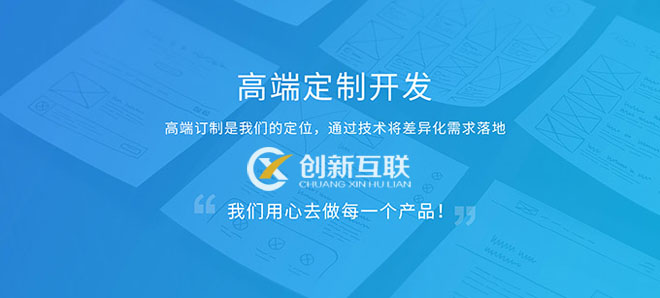asp.netmvc中如何实现Forms身份验证身份验证流程-创新互联
这篇文章主要介绍了asp.net mvc中如何实现Forms身份验证身份验证流程,具有一定借鉴价值,需要的朋友可以参考下。希望大家阅读完这篇文章后大有收获。下面让小编带着大家一起了解一下。

验证流程
一、用户登录
1、验证表单:ModelState.IsValid
2、验证用户名和密码:通过查询数据库验证
3、如果用户名和密码正确,则在客户端保存Cookie以保存用户登录状态:SetAuthCookie
1):从数据库中查出用户名和一些必要的信息,并把额外信息保存到UserData中
2):把用户名和UserData保存到 FormsAuthenticationTicket 票据中
3):对票据进行加密 Encrypt
4):将加密后的票据保存到Cookie发送到客户端
4、跳转到登录前的页面
5、如果登录失败,返回当前视图
二、验证登录
1、在Global中注册PostAuthenticateRequest事件函数,用于解析客户端发过来的Cookie数据
1):通过 HttpContext.Current.User.Identity 判断用户是否登录(FormsIdentity,IsAuthenticated,AuthenticationType)
2):从HttpContext 的Request的Cookie中解析出Value,解密得到 FormsAuthenticationTicket 得到UserData
2、角色验证
1):在Action加入 Authorize特性,可以进行角色验证
2):在 HttpContext.Current.User 的 IsInRole 方法进行角色认证(需要重写)
一、用户登录
1、设置web.config
设置重定向登录页面
<system.web> <authentication mode="Forms"> <forms name="loginName" loginUrl="/UserInfo/login" cookieless="UseCookies" path="/" protection="All" timeout="30"></forms> </authentication> </system.web>
注释掉
<modules> <!--<remove name="FormsAuthentication" />--> </modules>
2、登陆的验证中控制器
控制器中加“[Authorize]”修饰的方法拒绝匿名。
public class UserInfoController : Controller //控制器
{
//身份验证过滤器
[Authorize]
public ActionResult Index()
{
return View();
}
}控制器中登录
/// <summary>
/// 用户登录
/// </summary>
/// <returns></returns>
public ActionResult login()
{
return View();
}
[HttpPost]
public ActionResult login(loginModels login) {
if (ModelState.IsValid)
{
var model = db.Admininfo.FirstOrDefault(a => a.AdminAccount == login.AdminAccount && a.AdminPwd == login.AdminPwd);
if (model != null)
{
//存入票据(用户登录的时候去存信息,如果有信息直接去登录)
var dtoModel = new Users
{
id = model.id,
AdminPwd = model.AdminPwd,
AdminAccount=model.AdminAccount
};
//调用
SetAuthCookie(dtoModel);
//获取登录地址
var returnUrl = Request["ReturnUrl"];
//判断登录地址是不是空值
if (!string.IsNullOrWhiteSpace(returnUrl))
{
return Redirect(returnUrl);
}
else
{
//return RedirectiToAction
return Redirect("/Home/index");
}
}
else
{
ModelState.AddModelError("", "账号密码不对");
return View(login);
}
}
else
{
ModelState.AddModelError("", "输入的信息有误");
return View(login);
}对登录账号进行cookie
/// <summary>
/// 对登录账号进行cookie
/// </summary>
/// <param name="model"></param>
public void SetAuthCookie(Users loginModel) {
//1、将对象转换成json
var userdata = loginModel.ToJson();
//2、创建票据FormsAuthenticationTicket
FormsAuthenticationTicket ticket = new FormsAuthenticationTicket(2,"loginUser",DateTime.Now,DateTime.Now.AddDays(1), false, userdata);
//对票据进行加密
var tickeEncrypt = FormsAuthentication.Encrypt(ticket);
//创建Cookie,定义
HttpCookie cookie = new HttpCookie(FormsAuthentication.FormsCookieName, tickeEncrypt);
cookie.HttpOnly = true;
cookie.Secure = FormsAuthentication.RequireSSL;
cookie.Domain = FormsAuthentication.CookieDomain;
cookie.Path = FormsAuthentication.FormsCookiePath;
cookie.Expires = DateTime.Now.Add(FormsAuthentication.Timeout);
//先移除cookie,在添加cookie
Response.Cookies.Remove(FormsAuthentication.FormsCookieName);
Response.Cookies.Add(cookie);
}3、Models中添加模型文件
public class loginModels
{
/// <summary>
/// 账号
/// </summary>
[DisplayName("账号")]
[Required(ErrorMessage = "账号不能为空")]
public string AdminAccount { get; set; }
/// <summary>
/// 密码
/// </summary>
[DisplayName("密码")]
[Required(ErrorMessage = "密码不能为空")]
public string AdminPwd { get; set; }
}4、Views中 Login 代码:
复制代码 代码如下:
@using (Html.BeginForm("Login", "Account", new { ReturnUrl = ViewBag.ReturnUrl }, FormMethod.Post, new {
@class = "form-horizontal", role = "form" }))5、Global设置
protected void Application_AuthenticateRequest(object sender, EventArgs e)
{
//1、通过sender获取http请求
// HttpApplication app = new HttpApplication();//实例化
HttpApplication app = sender as HttpApplication;
//2、拿到http上下文
HttpContext context = app.Context;
//3、根据FormsAuthe,来获取cookie
var cookie = context.Request.Cookies[FormsAuthentication.FormsCookieName];
if (cookie != null)
{
//获取cookie的值
var ticket = FormsAuthentication.Decrypt(cookie.Value);
if (!string.IsNullOrWhiteSpace(ticket.UserData))
{
//把一个字符串类别变成实体模型
var model = ticket.UserData.ToObject<AdmininfoViewModel>();
//var acount = model.AdminAccount; //获取账号
context.User = new MyFormsPrincipal<AdmininfoViewModel>(ticket, model);
//MyFormsPrincipal.Identity = new FormsIdentity(ticket);
// MyFormsPrincipal.userdata;
}
}
}6、退出登录
控制器中
/// <summary>
/// 退出登录
/// </summary>
public ActionResult loginout()
{
//删除票据
FormsAuthentication.SignOut();
//清除cookie
Response.Cookies[FormsAuthentication.FormsCookieName].Expires = DateTime.Now.AddDays(-1);
Response.Cookies.Remove(FormsAuthentication.FormsCookieName);
return RedirectToAction("Index", "Home");
}View跳转链接
@Html.ActionLink("安全退出","loginout","Users")感谢你能够认真阅读完这篇文章,希望小编分享asp.net mvc中如何实现Forms身份验证身份验证流程内容对大家有帮助,同时也希望大家多多支持创新互联,关注创新互联行业资讯频道,遇到问题就找创新互联,详细的解决方法等着你来学习!
网站题目:asp.netmvc中如何实现Forms身份验证身份验证流程-创新互联
文章分享:/article4/dghiie.html
成都网站建设公司_创新互联,为您提供软件开发、企业网站制作、静态网站、网站建设、网站营销、ChatGPT
声明:本网站发布的内容(图片、视频和文字)以用户投稿、用户转载内容为主,如果涉及侵权请尽快告知,我们将会在第一时间删除。文章观点不代表本网站立场,如需处理请联系客服。电话:028-86922220;邮箱:631063699@qq.com。内容未经允许不得转载,或转载时需注明来源: 创新互联

- 火爆的ChatGPT,来聊聊它的热门话题 2023-02-20
- 怎样利用chatGPT快速赚钱? 2023-05-05
- ChatGPT是什么 2023-02-20
- ChatGPT是什么?ChatGPT是聊天机器人吗? 2023-05-05
- ChatGPT的应用ChatGPT对社会的利弊影响 2023-02-20
- ChatGPT的发展历程 2023-02-20
- 爆红的ChatGPT,谁会丢掉饭碗? 2023-02-20
- 马云回国,首谈ChatGPT。又是新一个风口? 2023-05-28